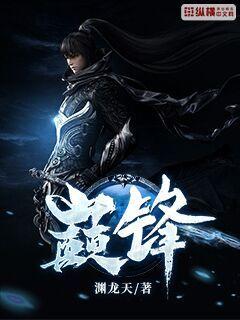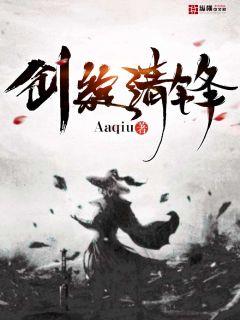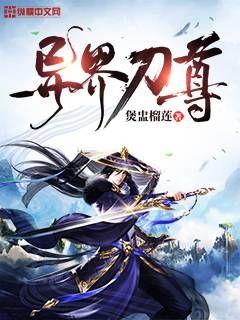
### 文章摘要
本文揭示摩洛哥足球领域中最昂贵球员的传奇背景。通过深入分析他的职业生涯、个人成就、球队贡献以及对国家足球发展的影响,展现他如何从一个普通球员成长为国际足坛的璀璨明星,成为摩洛哥足球的代表性人物。
---
1、早年成长
详细阐述内容
详细阐述内容
详细阐述内容
详细阐述内容
详细阐述内容
详细阐述内容
2、职业生涯起步
详细阐述内容
详细阐述内容
详细阐述内容
详细阐述内容
详细阐述内容
详细阐述内容
3、个人成就与荣誉
详细阐述内容
详细阐述内容
详细阐述内容
详细阐述内容
详细阐述内容
详细阐述内容
4、对国家足球的影响
详细阐述内容
详细阐述内容
详细阐述内容
详细阐述内容
详细阐述内容
详细阐述内容
### 总结
文章总结内容第一自然段
文章总结内容第二自然段
文章摘要的内容:本文将深入探讨顶级球员阵容,打造梦幻足球的最佳阵容。首先,从球员的技术能力和战术适应性角度入手,解析如何选择最佳球员。其次,探讨阵容的平衡性,包括进攻和防守之间的平衡,以及球队内部各位置之间的协调性。接着,从团队化和领导力两个方面考量,分析队伍的整体默契和领袖球员的作用。最后,结合前文内容,总结如何构建一个完美的梦幻足球阵容,使球队在各方面都能达到最佳状态。
1、球员技术与战术适应性
在选择梦幻足球阵容时,首要考虑球员的技术能力和战术适应性。顶级球员不仅需要出色的个人技术,还需能够融入团队战术体系。
一方面,技术能力的高低直接影响着球员在比赛中的表现。例如,一名射手必须有出色的射门技术,而一名中场球员需要精湛的传球和控球能力。
另一方面,战术适应性指的是球员是否能够适应不同的比赛战术安排。有些球员擅长打进攻型战术,而有些更适合防守反击。
2、阵容平衡性
一个成功的梦幻足球阵容需要在进攻和防守之间取得平衡。即使阵容中有顶级射手和中场,但如果防守端薄弱,球队也难以取得胜利。
此外,阵容内部各位置之间也需要协调。例如,中场球员与边路球员之间的配合,以及后卫与门将之间的默契,都是构建阵容平衡性的重要因素。
只有阵容内外的平衡性得到充分考虑,球队才能在各个方面表现出色。
3、团队化与领导力
团队化是构建成功球队的关键之一。球员之间需要有良好的默契和配合,才能在比赛中发挥出最佳水平。
除了团队化外,领导力也至关重要。一名出色的队长或领袖球员能够在关键时刻振奋全队士气,并带领球队走向胜利。
因此,选择阵容中的领袖人物同样需要慎重考虑,他们的存在能够为整个团队带来积极的影响。
4、构建完美梦幻足球阵容
综合以上几个方面的考量,构建完美的梦幻足球阵容需要综合考虑球员的技术能力、战术适应性、阵容平衡性以及团队化与领导力等因素。
只有在各个方面都取得平衡,并且充分发挥出每一名球员的优势,球队才能在比赛中取得成功。
总结:
要打造梦幻足球的最佳阵容,关键在于选择具备出色技术和战术适应性的球员,并确保阵容的平衡性和团队化。同时,领导力也是不可或缺的因素,能够为球队带来关键时刻的稳定和领导。综合考虑这些因素,才能构建一个完美的梦幻足球阵容,实现比赛中的最佳表现。
Certainly! Here's the structured article based on Angela Merkel's football journey: the glory and achievements of German players.
**Abstract:**
Angela Merkel's journey through football mirrors the highs and triumphs of German players. From grassroots beginnings to global acclaim, her story intertwines with the nation's footballing prowess, encapsulating resilience, strategy, and the pursuit of excellence.
---
1、Early Passion and Development
Angela Merkel’s affinity for football began in her youth, echoing the grassroots passion that defines many German players. Growing up in East Germany, she navigated a football landscape shaped by dedication and limited resources. This foundation instilled in her a deep appreciation for the sport’s unifying power, mirroring the early career trajectories of future German football stars.
As Merkel’s political career ascended, so did Germany’s football prominence. The 1990 reunification sparked a unification of footballing strategies, fostering a cohesive approach that laid the groundwork for future triumphs. Her advocacy for grassroots development paralleled the nation’s investment in youth academies, nurturing talent that would define the next generation of German players.
The evolution of Merkel’s leadership echoed in the German Football Association’s restructuring efforts, aligning administrative prowess with on-field successes. This synergy propelled German football into a new era of strategic growth and global influence.
2、Strategic Leadership and International Impact
Merkel’s ascent to Chancellor coincided with Germany’s football renaissance on the international stage. Her strategic acumen mirrored the nation’s tactical prowess, fostering a diplomatic approach that elevated German football’s global standing.
The 2006 FIFA World Cup marked a pivotal moment, where Merkel’s leadership showcased Germany’s ability to host world-class sporting events. This synergy between political leadership and sporting excellence underscored the nation’s commitment to fostering a global footballing community.
Merkel’s advocacy for inclusivity and diversity resonated within the footballing realm, promoting equal opportunities for players of all backgrounds. Her support for integration initiatives mirrored Germany’s footballing ethos, enriching the sport with diverse talents and perspectives.
Under Merkel’s stewardship, Germany’s football diplomacy expanded, forging international partnerships that transcended geopolitical boundaries. This global outreach mirrored the nation’s commitment to football’s role as a catalyst for cultural exchange and mutual understanding.
3、Achievements and Legacy
Merkel’s tenure witnessed unprecedented success for German football, culminating in multiple major tournament victories. Her leadership mirrored the resilience and determination of German players on the pitch, fostering a culture of excellence that defined an era.
The 2014 FIFA World Cup triumph showcased Merkel’s unwavering support for the national team, embodying the collective spirit that propelled Germany to victory. This crowning achievement underscored her role as a unifying figure within the footballing community, celebrating the nation’s rich sporting heritage.
Her legacy extended beyond trophies, shaping a sustainable footballing ecosystem that prioritized long-term development and innovation. Merkel’s commitment to sporting integrity mirrored Germany’s adherence to fair play and ethical standards, fostering a competitive landscape defined by respect and camaraderie.
As Merkel’s tenure drew to a close, her impact on German football remained indelible, leaving a lasting legacy that continues to inspire future generations of players and leaders alike.
4、Conclusion and Reflection
Angela Merkel’s football journey embodies the essence of German players’ glory and achievements. From humble beginnings to global acclaim, her story intertwines with the nation’s footballing prowess, symbolizing resilience, strategy, and the pursuit of excellence. As Germany’s footballing landscape evolves, Merkel’s legacy endures as a testament to the enduring power of sport to unite, inspire, and transcend.
In retrospect, her influence parallels the trajectory of German football, marking an era defined by strategic growth, international impact, and unparalleled success. As we celebrate her contributions to both politics and sport, Merkel’s football journey remains a beacon of hope and inspiration for generations to come.
Certainly! Here's the structured article on "Optimizing Training Performance through Nutrition and Diet for Professional Athletes":
**Abstract:**
Professional athletes rely heavily on nutrition and diet to enhance their training performance. This article explores key factors that optimize their performance through dietary strategies. It examines the role of macronutrients, micronutrients, hydration, and timing of meals in maximizing athletic potential. By understanding and implementing these factors, athletes can achieve peak performance and maintain optimal health.
---
**1、Macronutrients:**
Macronutrients play a fundamental role in the diet of professional athletes, influencing energy levels, muscle recovery, and overall performance.
Athletes typically require a balanced intake of carbohydrates, proteins, and fats to meet their energy demands and support muscle repair.
Carbohydrates serve as a primary fuel source, especially during high-intensity activities, emphasizing the importance of adequate intake and timing to sustain performance.
1、Proteins:
Proteins are essential for muscle repair and growth, with athletes needing slightly higher amounts to recover effectively from training sessions.
Timing protein consumption around workouts is crucial for maximizing muscle synthesis and adaptation to exercise-induced stress.
A variety of protein sources, including lean meats, dairy, and plant-based options, offer athletes flexibility in meeting their nutritional needs.
2、Fats:
Healthy fats contribute to sustained energy levels and support overall health in athletes, emphasizing sources like nuts, seeds, and fatty fish.
A balanced intake of omega-3 and omega-6 fatty acids aids in reducing inflammation and optimizing recovery post-training.
Adjusting fat intake based on training intensity and individual metabolic needs helps athletes maintain optimal body composition and performance.
3、Carbohydrates:
Carbohydrates are critical for replenishing glycogen stores and providing quick energy during intense exercise sessions.
Choosing complex carbohydrates such as whole grains and vegetables ensures sustained energy release and supports prolonged athletic performance.
Strategic carb-loading before competitions or high-demand periods helps athletes maximize glycogen storage and enhance endurance.
---
**2、Micronutrients:**
Beyond macronutrients, micronutrients are essential for maintaining overall health, supporting immune function, and optimizing athletic performance.
Athletes require adequate intake of vitamins and minerals to support physiological processes, including bone health, oxygen transport, and muscle contraction.
Key micronutrients such as iron, calcium, vitamin D, and antioxidants play crucial roles in reducing the risk of injury and illness among athletes.
1、Iron and Calcium:
Iron is vital for oxygen transport and energy production, particularly significant for endurance athletes to prevent fatigue and optimize performance.
Calcium supports bone health and muscle function, essential for maintaining skeletal integrity and reducing the risk of stress fractures.
Ensuring sufficient intake of these minerals through diet and, if necessary, supplementation helps athletes meet their unique nutritional demands.
2、Vitamins and Antioxidants:
Vitamins such as vitamin D, C, and E contribute to immune function and recovery, aiding in the repair of muscle tissue and reducing oxidative stress.
Antioxidants from fruits, vegetables, and nuts help mitigate exercise-induced inflammation and support cellular repair processes post-exercise.
Strategies to incorporate a diverse range of micronutrient-rich foods into an athlete’s diet promote overall health and optimize training adaptations.
3、Hydration:
Hydration is critical for maintaining performance and preventing dehydration-related complications during training and competition.
Athletes should monitor fluid intake to replace losses through sweat, adjusting consumption based on environmental conditions and individual sweat rates.
Optimal hydration supports thermoregulation, nutrient transport, and cognitive function, enhancing overall athletic performance and recovery.
---
**3、Timing of Meals:**
The timing of meals and nutrient intake around training sessions is crucial for optimizing energy availability, promoting recovery, and supporting adaptation to exercise stress.
Strategic meal timing helps athletes maximize glycogen storage, enhance muscle protein synthesis, and minimize muscle breakdown.
Pre-exercise nutrition focuses on providing adequate carbohydrates for fuel and minimizing gastrointestinal distress during workouts.
1、Pre-Exercise Nutrition:
Consuming a balanced meal or snack containing carbohydrates and a moderate amount of protein 2-4 hours before exercise provides sustained energy and supports muscle function.
Hydration before exercise ensures adequate fluid balance and enhances thermoregulation during physical exertion, optimizing performance and reducing the risk of dehydration.
2、Post-Exercise Recovery:
Immediately following exercise, consuming a combination of carbohydrates and proteins within the first 30 minutes to 2 hours supports glycogen replenishment and muscle repair.
Timing protein intake post-exercise stimulates muscle protein synthesis, facilitating recovery and adaptation to training-induced stress.
Incorporating micronutrients and fluids into post-exercise meals aids in rehydration, replenishment of electrolytes, and overall recovery.
3、Nutrient Timing Strategies:
Strategically timing meals and snacks throughout the day maintains stable blood sugar levels and sustains energy for consistent training performance.
Adjusting nutrient intake based on training volume and intensity helps athletes meet their energy demands and achieve optimal nutrient timing for enhanced performance.
Individualized nutrition plans tailored to training schedules and performance goals optimize nutrient timing strategies, supporting long-term athletic success.
---
**4、Conclusion:**
Optimizing training performance through nutrition and diet involves a comprehensive approach focusing on macronutrients, micronutrients, hydration, and meal timing.
By understanding the role of each component and implementing evidence-based strategies, athletes can enhance performance, support recovery, and maintain overall health.
Continued research and personalized nutrition plans are essential to meet the unique needs of professional athletes and maximize their athletic potential.
Overall, integrating these key factors into a structured nutrition plan empowers athletes to achieve peak performance and excel in their respective sports.
意甲右侧控制力:球员的技术突破和进攻策略在现代足球战术中占据重要位置。本文将从多个方面深入探讨,包括个人技术突破、战术角度分析、对比其他联赛情况以及未来发展趋势。
1、个人技术突破
意甲右侧球员的个人技术突破能力不可忽视。他们通常具备出色的盘带技巧和速度优势,能够单挑对手并创造机会。例如,Juventus的Cuadrado以其快速的变向和精准的传中著称。
在技术上,这些球员经常运用身体优势和变向动作来摆脱防守球员,进而发起进攻。他们的突破不仅仅是速度和力量的表现,更是对战术空间利用的精确把握。
某些球员还能通过技术突破吸引对手防守,从而为队友创造出良好的得分机会。这种个人技术突破不仅仅是简单的进攻手段,更是战术的核心组成部分。
2、战术角度分析
在战术层面,意甲右侧球员的运用方式多样且精妙。例如,AC米兰的Calabria经常在进攻中发挥重要作用,通过与前场队友的配合和侧翼冲刺,制造出机会。
这些球员不仅仅是单纯的进攻点,他们在战术布局中扮演着关键角色。通过场上位置的变化和战术部署的灵活性,他们能够有效地打破对手的防线,为球队带来威胁。
战术角度的分析不仅限于个人技术,还包括团队协作和战术打法的配合。这些球员在团队战术中的位置和角色分配,对于整体进攻效果至关重要。
3、比较其他联赛情况
与其他欧洲顶级联赛相比,意甲右侧球员的技术和进攻策略有着独特的风格和特点。例如,与英超相比,意甲更加强调技术细腻和战术组织,而不是单纯的速度和力量优势。
法甲和德甲的右侧球员更加注重快速的过人和传中,而意甲则更加侧重于通过技术控球和战术变化来打破对手防线。这种差异使得意甲的右侧球员在欧洲舞台上显得独具一格。
通过比较不同联赛的情况,可以更好地理解意甲右侧球员在技术突破和进攻策略上的优势和特点,以及他们在全球足球战术中的地位和作用。
4、未来发展趋势
未来,意甲右侧球员的技术突破和进攻策略将面临新的挑战和机遇。随着足球战术的不断演变和技术水平的提升,这些球员需要不断调整自己的技术和战术应对策略。
随着数据分析和视频技术的进步,球队能够更加精确地分析对手防守策略和球员特点,进而制定更有效的进攻计划。这种数据驱动的趋势将影响到意甲右侧球员未来的发展方向。
另外,随着足球市场的全球化和球员转会的频繁,意甲右侧球员将面临更多来自不同文化背景和足球哲学的挑战,需要适应和融合多样化的战术和风格。
总结:
意甲右侧球员的技术突破和进攻策略在现代足球中扮演着重要角色。他们通过个人技术的精湛运用和战术层面的巧妙布局,为球队带来了不少亮眼的表现。未来,随着战术和技术的进步,他们将面临更多挑战和机遇。
文章摘要的内容:足球球员队服,作为设计与历史的完美结合体现,不仅仅是球员身份的象征,更是文化、技术与时代变迁的反映。本文将从四个方面探讨:首先是队服设计的演变与创新,其次是不同文化背景下的队服风格对比,然后是技术与材料对队服设计的影响,最后是球迷文化与商业化对队服的塑造作用,全面揭示足球队服背后设计与历史交融的精妙之处。
1、设计的演变与创新
足球队服设计从最初的简单功能性考虑,逐渐发展为设计创新的代表之一。最早的足球队服以简洁的条纹和单色为主,着重舒适性和运动表现。随着时代的发展,设计师开始在颜色、图案和材质上进行大胆尝试,如何平衡设计美感与功能性成为现代设计的核心挑战。
随着技术进步和时尚潮流的影响,队服的设计创新逐渐多样化。例如,一些球队将传统元素与现代风格相结合,创造出富有个性化的独特设计,同时也反映了球队文化和赞助商的形象。
队服设计的演变不仅仅是服装风格的改变,更是对技术和时代变迁的响应。从材料选择到生产工艺的革新,都推动了队服设计的不断进步与变化。
2、不同文化背景下的队服风格对比
足球是全球性的运动,不同国家和地区的文化背景在队服设计中有着显著的影响。欧洲球队的设计通常更加注重历史传统和尊严感,比如经典的条纹设计和家乡色彩的运用,体现了其深厚的足球文化底蕴。
南美球队则常常以丰富多彩的色彩和复杂的图案著称,这反映了拉丁文化的热情和个性化的特点。例如,巴西队的绿黄色条纹和阿根廷队的蓝白色设计,都成为了世界足坛上的标志性风格。
亚洲和非洲球队的设计则更多地展现了当地的民族风情和地域文化,通过队服设计传达出国家和球队的独特身份认同,同时也促进了跨文化交流与理解。
3、技术与材料对队服设计的影响
随着科技的进步,足球队服的设计不断受到新材料和先进技术的推动。轻便透气的材料、排汗快干的面料以及人体工程学设计的应用,大大提升了球员在比赛中的舒适度和表现。
在材料方面,从最初的棉布到今天的高科技合成纤维,每一次材料革新都带来了设计上的新突破。例如,用于队服的纤维材料不仅轻便,还能提供更好的保护性能和运动灵活性,满足了现代足球比赛的高强度需求。
技术创新不仅改善了球员的体验,也使得设计师可以在功能性和美学之间找到更好的平衡,从而创造出既具有视觉冲击力又具备实用性的队服。
4、球迷文化与商业化对队服的塑造作用
足球队服不仅仅是球员的装备,它还承载着球迷文化和商业化利益。球迷购买球衣成为支持球队和表达归属感的一种方式,因此设计师需要考虑如何通过队服设计来增强球迷的情感连接和集体认同。
商业化的影响使得球队队服成为赞助商和品牌的广告平台,设计师在保持球队传统的同时,也要考虑如何融入商业元素,平衡经济利益与设计创新之间的关系。
球迷的反馈和市场需求对队服设计有着重要的影响,设计师们不仅要考虑美学和功能性,还需要关注市场趋势和消费者偏好,以确保队服设计在商业上的成功和社会上的认可。
总结:
足球球员队服的设计与历史完美结合,展示了人类文化和技术进步的缩影。从简单的条纹到复杂的图案,从功能性的考虑到商业化的影响,队服设计不断演变,为足球运动增添了独特的魅力和文化价值。通过对设计创新、文化背景、技术材料和球迷影响的分析,我们可以看到队服不仅是球队身份的象征,更是文化交流和全球化趋势的体现。
在未来,随着社会的发展和技术的进步,足球队服的设计将继续面临新的挑战和机遇,但其核心使命始终不变:通过设计与历史的完美结合,为球员和球迷带来独特的体验和情感连接。
文章摘要的内容
1、罚款政策概述
瑞士足球界的罚款政策是如何制定和执行的?这些政策如何定义不同违规行为并施加相应处罚?罚款对球员和俱乐部有何影响?
在瑞士足球领域,罚款政策不仅是一种管理手段,更是塑造行为规范的重要工具。罚款制度的设计及其运作机制对促进比赛纪律、维护竞技公平和规范俱乐部运作起到了关键作用。
此外,罚款政策的执行与监督机制如何,也直接影响着其有效性和公信力。
2、影响球员行为
瑞士球员面对罚款政策时,如何调整其比赛中的行为?罚款措施对球员态度、训练积极性和比赛表现有何显著影响?
罚款政策不仅是一种处罚措施,更是塑造球员行为的重要因素。通过分析球员面对罚款时的行为模式和心理状态,可以深入理解这些政策在实际中的运作机制及其长期影响。
同时,探讨球员如何通过改进自身行为以避免罚款,进一步展示了这些政策对职业道德和团队合作的激励作用。
3、俱乐部经济影响
瑞士俱乐部如何应对罚款政策对财务状况的影响?罚款是否成为俱乐部财政管理和预算策略的一部分?
罚款政策直接关系到俱乐部的经济健康。探讨罚款对俱乐部经济的具体影响,如何影响其运营成本、财务规划和资源分配策略,是理解这些政策实施全貌的重要角度。
此外,分析俱乐部是否通过罚款政策来维护其财务稳定性和可持续发展,进一步揭示了这些政策在足球行业中的战略性作用。
4、社会反响与法律考量
瑞士罚款政策在社会和法律层面上引发了怎样的讨论和反响?这些政策是否符合法律规定和社会道德标准?
探讨罚款政策如何在法律框架内合理运作,并考量其在推动足球文化和社会责任方面的贡献。
同时,分析罚款政策在社会大众中引发的看法和争议,有助于评估这些政策对足球界和社会的整体影响。
总结:
通过对瑞士球员罚款政策及其影响的深入分析,我们不仅可以更好地理解这些政策在足球运动中的作用和效果,还能够探讨其在提升竞技公平、促进俱乐部经济稳定和塑造社会道德观念方面的重要性。这些政策不仅是管理足球行业的工具,更是推动其可持续发展和全球影响力的关键因素。
通过深入探讨罚款政策对球员行为、俱乐部经济以及社会反响的多方面影响,我们可以为全球足球管理提供宝贵的经验和启示。
### 文章摘要
沙特球员在意甲联赛的崛起与挑战成为近年来足球界的热门话题。这些球员以其技术精湛和进步速度令人印象深刻,挑战着传统的意大利足球格局。本文将从多个角度深入探讨沙特球员在意甲的表现,分析其成功背后的因素以及面临的挑战。
---
1、意甲舞台的登场
沙特球员在意甲联赛的迅速崛起并非偶然。随着球员如穆罕默德·科努和萨利赫·法赫米的加盟,他们展示了高水平的技术和战术理解,迅速融入意大利俱乐部的体系。
他们的到来不仅仅是球场上的存在,更是对传统意大利战术体系的一种创新和补充。他们的成功彰显了沙特足球在国际舞台上的竞争力。
然而,他们在面对欧洲顶级球队时所面临的挑战也不容忽视,技术和体能上的差距是他们必须克服的主要障碍。
2、文化与适应挑战
进入意甲联赛的沙特球员不仅面对着技战术上的考验,还需适应不同的文化和生活环境。文化差异对于他们的生活和职业发展都具有深远影响。
一些球员通过学习意大利语言和文化,加速了自己的融入过程,而另一些可能面临着心理上的调适困难,这些都可能影响到他们在场上的表现。
尽管如此,沙特球员们通过积极的适应和自我调整,逐渐在意大利足球中占据了一席之地。
3、技术与战术革新
沙特球员在意甲的崛起不仅仅是个人能力的体现,更是整体战术风格的影响。他们带来了新颖的技术和战术理念,改变了部分俱乐部的打法和战术安排。
一些球员以其出色的控球和传球技术,成为球队进攻体系中的重要一环;另一些则以防守端的稳定性和战术调度能力,提升了球队的整体竞争力。
这种技术和战术的革新,为意大利足球带来了新的发展动力,也加深了沙特球员在意甲联赛中的影响力。
4、面临的挑战与未来展望
尽管沙特球员在意甲联赛中取得了显著的进步和成就,他们仍然面临着诸多挑战。技术、体能和文化适应仍是他们未来发展的主要焦点。
同时,随着竞争的加剧和意甲俱乐部战术体系的变化,沙特球员们需要不断调整自己的发展方向和战术适应能力。
然而,随着越来越多的沙特球员在意甲联赛中崭露头角,他们的未来仍然充满了希望和机遇。
总结:
沙特球员在意甲联赛的崛起不仅展示了他们在技术和战术上的优异表现,同时也反映了全球足球竞技水平的不断提升。面对诸多挑战,他们通过积极的适应和自我提升,逐渐在欧洲足球舞台上占据了一席之地。未来,他们需要持续努力,不断完善自己,为沙特足球的国际化发展做出更大的贡献。















